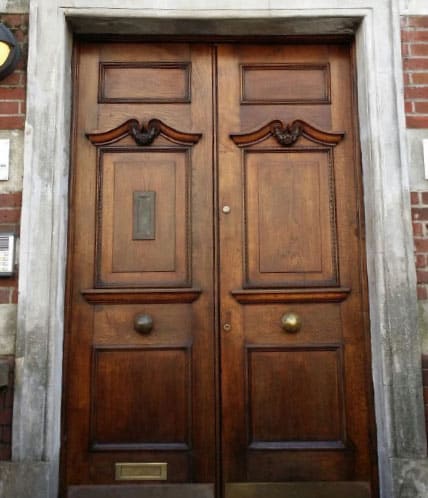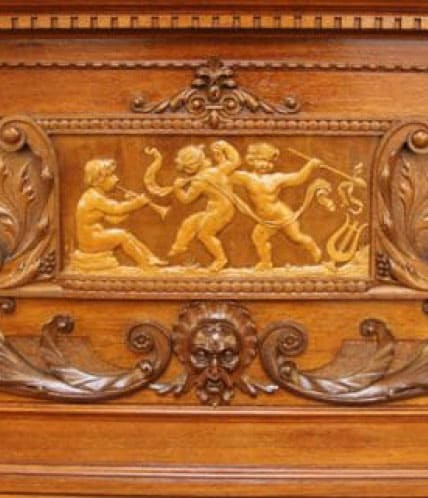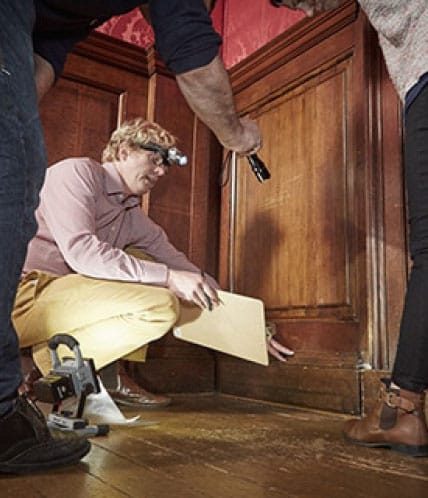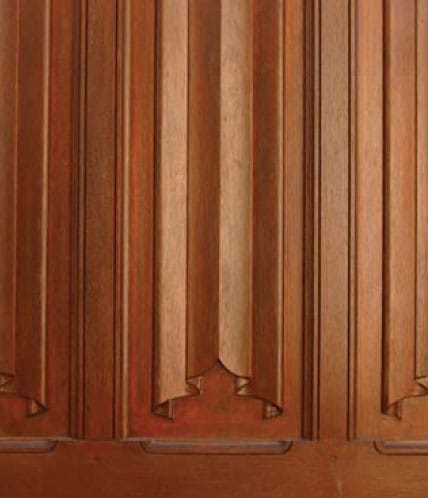The precious wood from tropical rainforests adds value and character to spaces with elegant and long-lasting flooring, doors, cabinets, and trim. Artisans and architects over the centuries have honoured mahogany’s versatility and timelessness, using it in fine craftsmanship for various projects.
One of the most impressive qualities of mahogany is its strength and resistance to insect infestation The good hardwood resists wear and tear, rendering it ideal for high-use items like flooring, staircases, and doors. Its durability makes it an excellent choice for outdoor furniture, as it can withstand exposure to the elements without deteriorating.
In addition to its lastingness and imperishability, mahogany has a unique beauty, setting it apart from other woods. Its rich colour, tight grain, and smooth texture create a luxurious look that complements many design styles. The wood’s natural patina only improves with age, developing a lustrous sheen that adds to its impressive appearance.
The Importance of Mahogany in Colonialism and Empire Building
Mahogany has a long and fascinating history. The Spanish discovered the tree in the mid-16th century during their conquest of the Americas and recognised the value of wood, prizing it for its strength, beauty, and workability. They named the tree “mogno,” which eventually became “mahogany” in English.
The forests of the Caribbean were the first source of mahogany, where the trees grew in abundance on the islands of Cuba, Jamaica, and Hispaniola. As demand for the wood grew, the British established trade in mahogany from the region, with British merchants and colonists exploiting the forests of these islands.
In the 18th and 19th centuries, the focus of mahogany harvesting shifted to Central and South America, particularly the countries of Brazil, Peru, and Venezuela.
The conquistadors and conquerors of the New World felled mahogany wood without regard for the long-term health of the forests. The indiscriminate practice led to widespread deforestation and habitat loss, and by the late 19th century, they had depleted most old wood mahogany forests. And the precious wood became increasingly rare and expensive.
Thankfully, efforts to protect the species and promote sustainable harvesting practices have helped to ensure the hardwood’s future. Today, many countries have implemented regulations to ensure that the wood is responsibly and sustainably forested, and consumers can choose to purchase products made from sustainably-sourced mahogany.

The Rise of Mahogany: How a Tropical Wood Became a Symbol of Wealth and Style
In the 16th century, people used mahogany to construct furniture and household items, marking the beginning of its historical significance. In the 18th and 19th centuries, the highly prized timber gained widespread popularity in the United States and Europe, partly due to the international trade of mahogany, which brought large quantities to these regions.
Mahogany wood has been used for centuries to create furniture and other household items, particularly during the Georgian, and Victorian eras when sea exploration was the order of the day. The lustrous wood, prized for its strength, durability, and beauty, became fashionable for creating luxurious furnishings and panelling in stately homes, grand houses, and public buildings.
During the Tudor period, mahogany wasn’t readily available in England and locally grown dark woods, such as oak and walnut, was used to create panelling and furniture with intricate carvings and designs. However, it was during the Georgian era that mahogany started to gain popularity, thanks to the availability of wood through international trade and the popularity of the master artisan, Chippendale.
Thomas Chippendale and the Chippendale Style
Chippendale furniture is styled after the famous 18th-century English furniture maker Thomas Chippendale, renowned for his skill and artistry in woodworking. Chippendale made his furniture pieces from the finest hardwoods, such as mahogany, and adorned them with intricate ornamentation that reflected the highest levels of craftsmanship.
Chippendale’s influence on woodworking was not confined to England, as his designs quickly gained popularity worldwide, including in the American colonies. American woodworking in the 18th century was heavily influenced by Chippendale’s designs, and his work became highly sought after by wealthy clients. The Georgian era of British architecture, which spanned from 1714 to 1830, was the height of Chippendale’s popularity, with his furniture designs fitting perfectly within the symmetrical and ornate aesthetic of the time.
By the Victorian era, the popularity of mahogany had only grown, and it became the wood of choice for many grand homes and public buildings for decorative panelling, window frames, and floorboards. Its rich, dark colour and smooth texture made it widely favoured in traditional and contemporary designs.
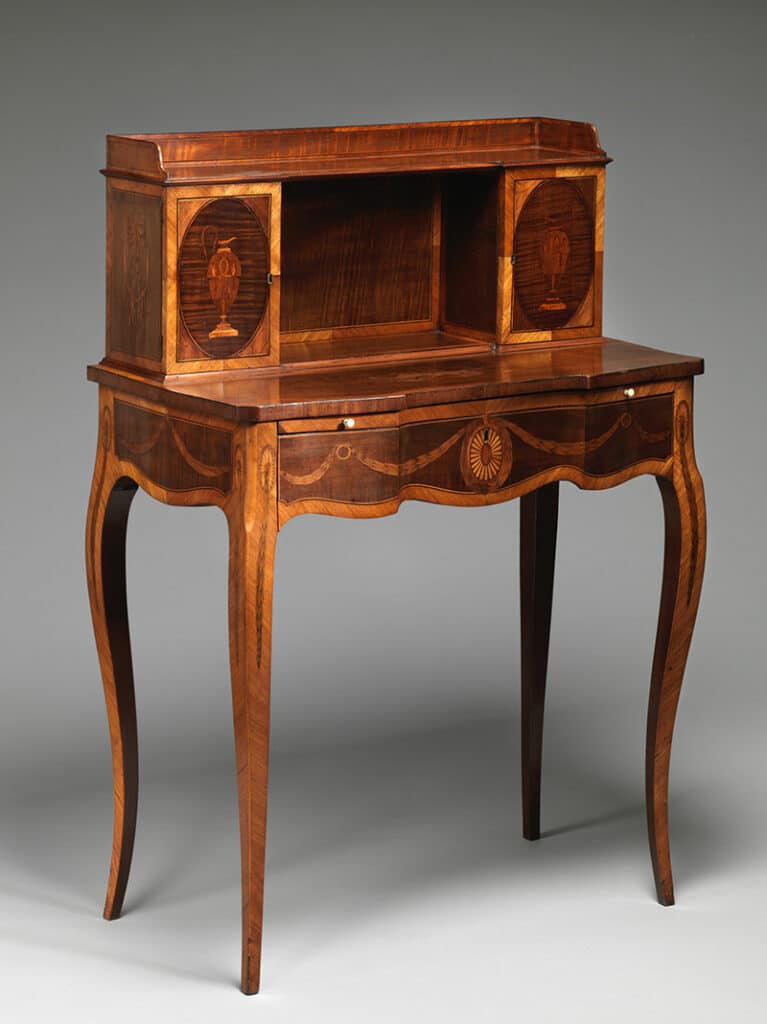

The Arts and Crafts movement, founded by William Morris in the 19th century, reacted against the mass-produced goods of the Industrial Revolution, promoting craftsmanship, simplicity, and natural materials like wood. William Morris was a prominent designer, writer, and political activist who founded the Arts and Crafts movement in the 19th century.
Morris was a pioneer in rejecting the mass-produced goods that had flooded the market during the Industrial Revolution, which he believed lacked soul and creativity. He instead believed in the importance of handcrafted goods made with passion, skill, and integrity and his vision of craftsmanship was based on the idea that beauty and utility could coexist in everyday objects. He believed that a beautiful and well-made object would bring joy and elevate the human spirit and that this beauty should be accessible to everyone.
To achieve this goal, Morris established his company, Morris, Marshall, Faulkner & Co. (later known as Morris & Co.), in 1861. The company produced high-quality, handcrafted items, including textiles, furniture, wallpaper, and stained glass.
Morris’s designs were characterized by intricate patterns, bold colours, and natural motifs. His work was greatly influenced by medieval and Gothic styles and traditional British and Islamic art. The Arts and Craft movement’s architects and designers favoured mahogany for its distinctive grain, rich hue, and exceptional aesthetic appeal aligning with their philosophy.

The inviting tones and intricate grain designs of the wood matched their emphasis on masterful and meticulous artisanship and woodwork. Mahogany’s use showcased how the movement highly valued detailed craftsmanship and precision, reflected in the exquisite and intricate grain patterns. They incorporated mahogany into homes by using it for furniture, doors, and trim, highlighting its beauty and durability as a prized material for construction and design.
In America, the Arts and Crafts movement influenced architecture and home design and inspired the ‘Craftsman’ style, a trend advocating natural materials and handcrafted details rather than industrialised components. Mahogany was a popular choice for Craftsman-style homes for its aesthetic appeal and durability and was used to make everything from built-in bookshelves to fireplace mantels.
The Resistance of Mahogany: Its Historical Use in Shipbuilding

Mahogany wood was used in shipbuilding in British and American shipyards during the 18th and 19th centuries. This hardwood was known for its durability, strength, and resistance to rot and decay, making it ideal for use in ship construction.
Mahogany wood resisted the elements, such as moisture, saltwater, and sun exposure, which are common challenges faced by ships at sea, making it highly valued. Its tight grain structure and natural oils also made it resistant to warping, twisting, and splitting, further enhancing its suitability for shipbuilding.
British shipbuilders commonly used mahogany to construct the upper decks and interior fittings of naval vessels, including the famous HMS Victory, Lord Nelson’s flagship at the Battle of Trafalgar. American shipbuilders also favoured mahogany for use in ship construction, particularly for the interiors of luxury yachts and the decks of smaller vessels.
However, the use of mahogany wood for shipbuilding began to decline in the 20th century due to over-harvesting and the resulting scarcity of high-quality wood – and in the 21st Century, we primarily use it to create designer furniture and musical instruments.
Despite its declining popularity in shipbuilding, the legacy of mahogany wood is visible in historic ships such as the USS Constitution, constructed using a combination of oak and mahogany wood. The durability and strength of the mahogany used in these ships have allowed them to survive for centuries and remain valuable artefacts of maritime history.
Mahogany continued to be a popular choice for furniture-making throughout the 20th century. However, by the mid-20th century, concerns about deforestation and unsustainable logging led to a decline in its use. Today, more sustainable practices exist to prevent profiteering and exploitation of mahogany forests.
Contact Heritage Woodwork Consultancy for Vincent Reed’s advice on your Mahogany period woodwork.
